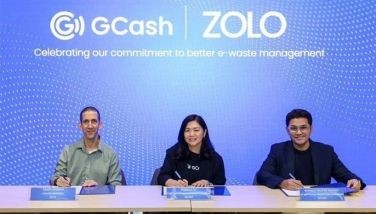Landbank helps stabilize sugar prices
July 5, 2005 | 12:00am
BACOLOD CITY, Negros – The Land Bank of the Philippines (LBP) has launched a special financing program designed to stabilize the prices of sugar in the domestic market.
Known as the special sugar quedan financing program, the amount released by the LBP will be tapped by the sugar planters nationwide to cover cost of operations without having to sell their quedan to sugar traders.
A quedan is a receipt of the sugar mills indicating the planter’s volume of sugar in the said mill. It is recognized as a negotiable instrument by the industry and the commercial banking system.
"Instead of selling the quedan to the trader at possible a low price, the planter can hold on to their quedan while availing of the special financing program to cover cost of production," Reynaldo P. Bantug, president of the Confederation of Sugar Producers Association Inc. said during the formal ceremonies held in this Visayan city.
Bantug explained that the end effect is that domestic prices of sugar would stabilize and remain competitive benefiting both the planters, millers and endusers.
Without the special financing program, prices of sugar become erratic with fluctuations ranging up to P200 per bag. The average composite price ranged from P750 to P780 per bag.
It will likewise assure endusers of regular supply all year round with prices closely monitored by the Sugar Regulatory Administration (SRA) in consultation with the indsutry.
"If it is too expensive, the country might be forced to import. If it is too cheap, there could be an oversupply which would only kill the industry," the confederation head said.
The new situation created by the special financing scheme should benefit the entire industry from the small farmers to the big planters to the traders and millers, to the endusers both household and industrial.
Meanwhile, LBP president and chief executive officer Margarito B. Teves said that the government financial institution can fund the program up to P2 billion.
The sourcing of the fund will come from its regular agri-related financing window for post-harvest.
He likewise admitted that the LBP will look into other facilities if the need arises to finance the special program.
It has credit facilities for the National Food Authority (NFA), the Quedancor, and several rural banks.
"We are also encouraging rural banks and sugar planters to sit down for matching sessions for their lending requirements," Teves said, additing that the bank still has P500 million of unavailed funds originally sopought by Quedancor.
In the same occasion, the LBP opened a P150-million credit facility for the importation of urea which would bring down the retail prices from P930 per bag to P730, or a savings for the farmers of P200 per bag.
"The confederation of sugar producers, who availed of the loan facility, will import the urea and resell it to the farmers resulting in huge savings," bank officials explained.
The interest rate slapped on the facility will be more than 10 percent but not more than 12 percent.
Target importation sources will come either from the Ukraine or South Korea.
Known as the special sugar quedan financing program, the amount released by the LBP will be tapped by the sugar planters nationwide to cover cost of operations without having to sell their quedan to sugar traders.
A quedan is a receipt of the sugar mills indicating the planter’s volume of sugar in the said mill. It is recognized as a negotiable instrument by the industry and the commercial banking system.
"Instead of selling the quedan to the trader at possible a low price, the planter can hold on to their quedan while availing of the special financing program to cover cost of production," Reynaldo P. Bantug, president of the Confederation of Sugar Producers Association Inc. said during the formal ceremonies held in this Visayan city.
Bantug explained that the end effect is that domestic prices of sugar would stabilize and remain competitive benefiting both the planters, millers and endusers.
Without the special financing program, prices of sugar become erratic with fluctuations ranging up to P200 per bag. The average composite price ranged from P750 to P780 per bag.
It will likewise assure endusers of regular supply all year round with prices closely monitored by the Sugar Regulatory Administration (SRA) in consultation with the indsutry.
"If it is too expensive, the country might be forced to import. If it is too cheap, there could be an oversupply which would only kill the industry," the confederation head said.
The new situation created by the special financing scheme should benefit the entire industry from the small farmers to the big planters to the traders and millers, to the endusers both household and industrial.
Meanwhile, LBP president and chief executive officer Margarito B. Teves said that the government financial institution can fund the program up to P2 billion.
The sourcing of the fund will come from its regular agri-related financing window for post-harvest.
He likewise admitted that the LBP will look into other facilities if the need arises to finance the special program.
It has credit facilities for the National Food Authority (NFA), the Quedancor, and several rural banks.
"We are also encouraging rural banks and sugar planters to sit down for matching sessions for their lending requirements," Teves said, additing that the bank still has P500 million of unavailed funds originally sopought by Quedancor.
In the same occasion, the LBP opened a P150-million credit facility for the importation of urea which would bring down the retail prices from P930 per bag to P730, or a savings for the farmers of P200 per bag.
"The confederation of sugar producers, who availed of the loan facility, will import the urea and resell it to the farmers resulting in huge savings," bank officials explained.
The interest rate slapped on the facility will be more than 10 percent but not more than 12 percent.
Target importation sources will come either from the Ukraine or South Korea.
BrandSpace Articles
<
>
- Latest
Latest
Latest
December 17, 2024 - 10:00am
December 17, 2024 - 10:00am
December 13, 2024 - 12:19pm
December 13, 2024 - 12:19pm
December 4, 2024 - 4:05pm
December 4, 2024 - 4:05pm
November 25, 2024 - 9:35am
November 25, 2024 - 9:35am
October 8, 2024 - 7:00am
October 8, 2024 - 7:00am
Recommended

























